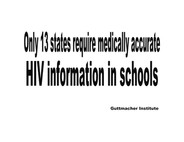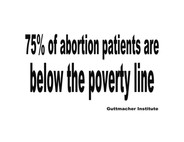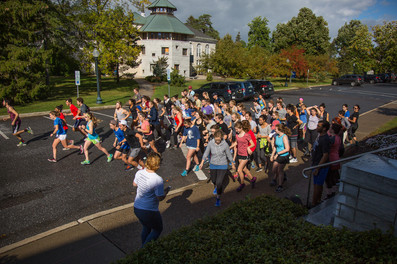Miranda-Max de Beer

Steps Towards Reproductive Justice: A Middlebury 5K
Inception
In the Fall of 2016, my colleague and I, students of Professor Carly Thomsen’s class “Politics of Reproduction” at Middlebury College, undertook a project to “translate an academic argument articulated in a course text into an alternative format [to make] said argument mobile” (source). Together, we created Steps Towards Reproductive Justice. We mobilized academic texts utilizing the framework of a 5K, not traditionally associated with queer activism events, to introduce members of the community who might not typically attend such events to the principles of reproductive justice. In 2017 and 2019, we continued to host the event outside of a class project structure, making sure to maintain the event’s core educational format.
What is Reproductive Justice?
SisterSong defines reproductive justice as “the human right to maintain personal bodily autonomy, to have or not have children, and to parent the children we have in safe and sustainable communities.” The name “reproductive justice” is somewhat of a portmanteau of reproductive rights and social justice. Reproductive justice considers how sociopolitical and socioeconomic circumstances, gender identity, sexuality, and race affect reproductive healthcare and policy. It is a more holistic approach to how we critically analyze the power structures that have led to the marginalization of millions. Though the concepts of reproductive rights and reproductive justice are similarly named, they differ in their scope. The reproductive rights movement is primarily focused on individual reproductive freedoms via the legal system: does one have the codified right to family planning, abortions, etc? Reproductive justice takes into account this aspect of legality, but goes beyond it. The framework recognizes that there is no real choice without feasible access. In the United States, the barriers that block access disproportionately affect those who are economically, socially, and racially marginalized.
Event Structure
In order to work towards the primary goal of mobilizing academic arguments, we employed three main strategies: a de-emphasis on racing, two-fold information dissemination, and post-5K activities and goodies.
Not A Race
De-emphasizing the inherent “racing” aspect of a 5K was especially important to us. Though we employed the 5K structure as a way to attract more athletically inclined audiences, we did not employ it as a way to exclude those who do not enjoy competitive exercise. Our advertising materials were designed to reflect the non-competitive nature of the event, like including silhouettes of people of varying athletic ability and making sure our wording was inclusive of various methods of completing a 5K (walking, running, skipping).
Posters advertising the event; from left to right, 2016, 2017, and 2019.
Sharing Information
Our next strategy was a two-step approach to information dissemination. We needed to figure out how to quickly share information with people on the move, possibly going as fast as a running pace. We placed ten plastic yard signs along the course with concise facts about the status of reproductive justice in the US. The facts stated on each sign were then further explored in a pamphlet that we distributed to participants at a post-5K reception. The goal of the signs on the course was to spark interest among participants while still engaged in the 5K, giving them time to ruminate on the facts presented. They were then primed to receive the pamphlets at the reception, which sparked conversation among participants.
Yard signs from the original 2016 event.
Activities and Souvenirs
Our third strategy was to provide snacks and participatory activities to engage participants at the reception after the 5K. Finger foods, a photo booth, or tie-dyeing maintained a more relaxed atmosphere to have discussions about a complex topic like reproductive justice. Further, giving the participants something tangible to take home, like a pamphlet or a t-shirt, allows the event to live on outside the confines of the few hours it took place over.
Event Results
Between the 5K’s three iterations, we received over $3.5k in grant funding from Middlebury’s Center for Community Engagement, Chellis House Women’s Resource Center, and Middlebury Service Cluster Board Flex Fund for Volunteer Initiatives, and $600 in in-kind donations from community partners.
Media:
"Students Organize Run for Reproductive Justice" from The Middlebury Campus (October 2017)
Accolades:
Honorable Mention, Alison G. Fraker '89 Prize (2017)
References:
"What is Reproductive Justice?" by SisterSong
"Reproductive Rights vs. Reproductive Justice: Why the Difference Matters in Bioethics" by Danielle M. Pacia









































